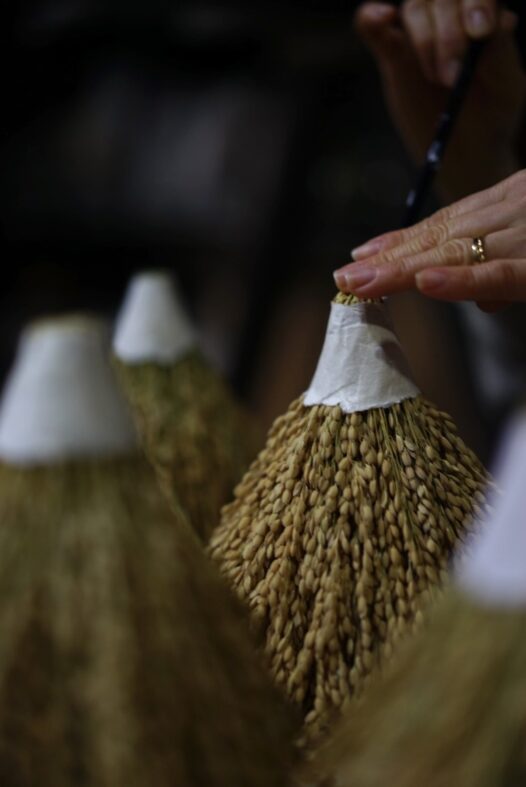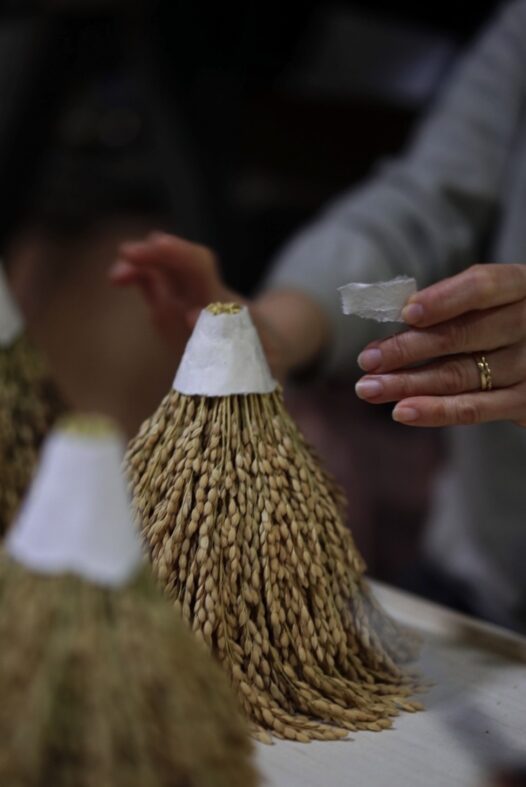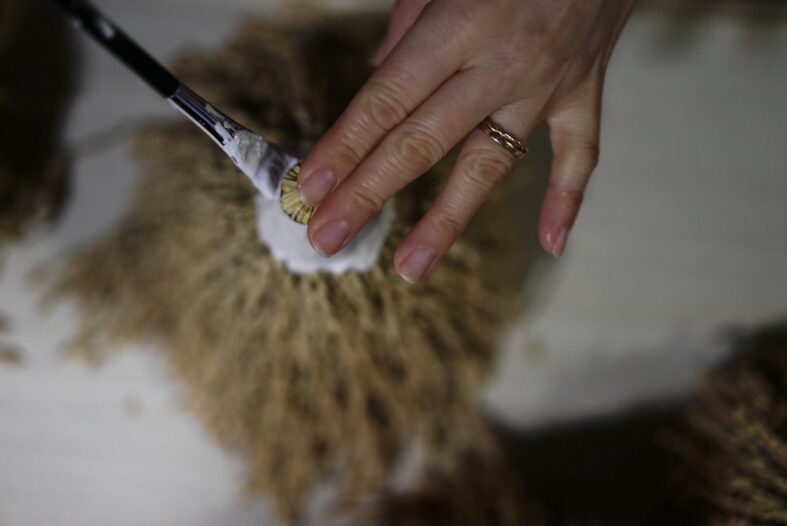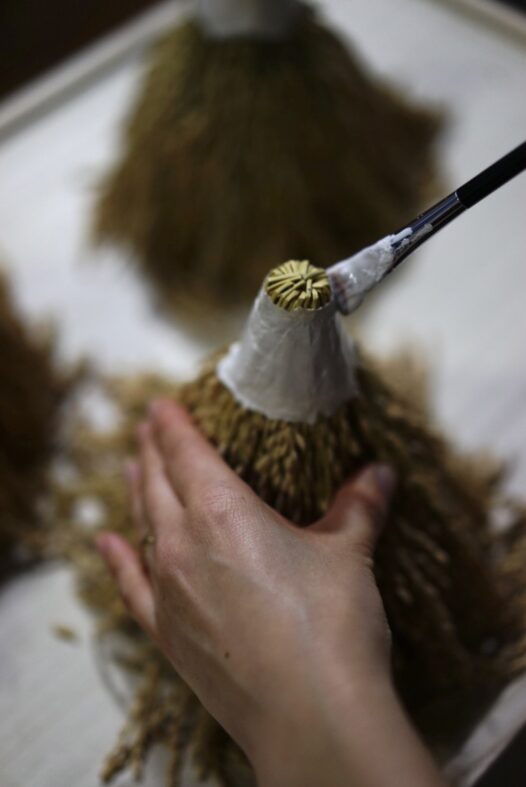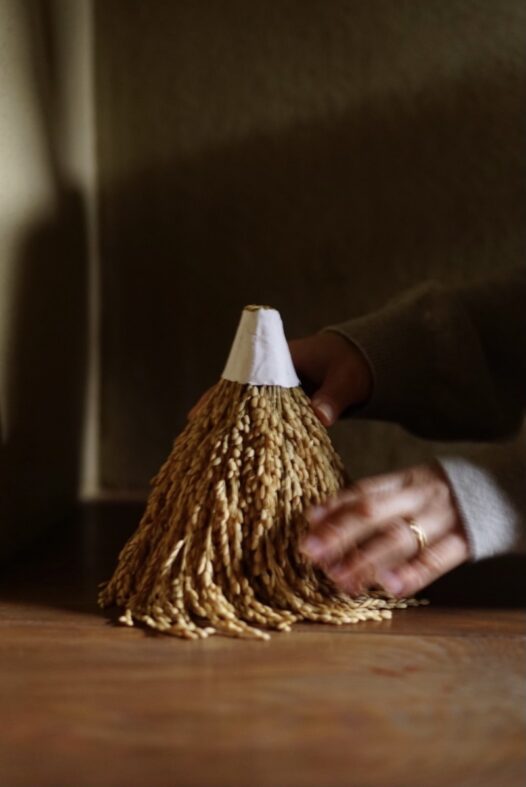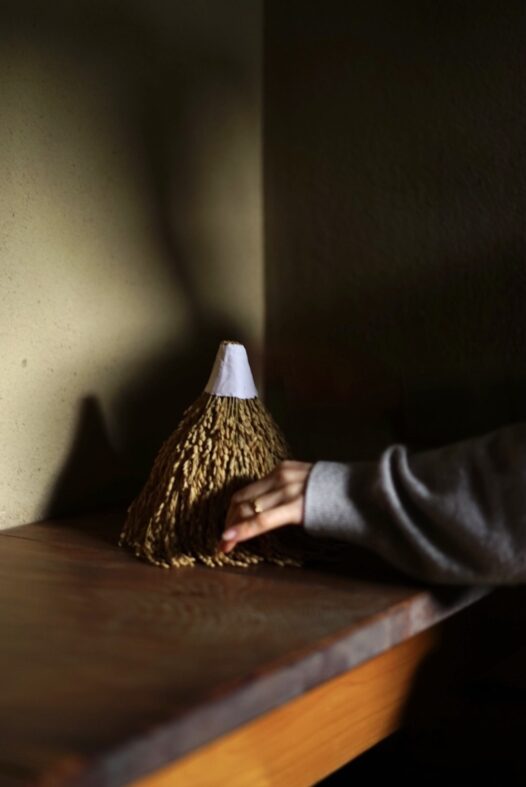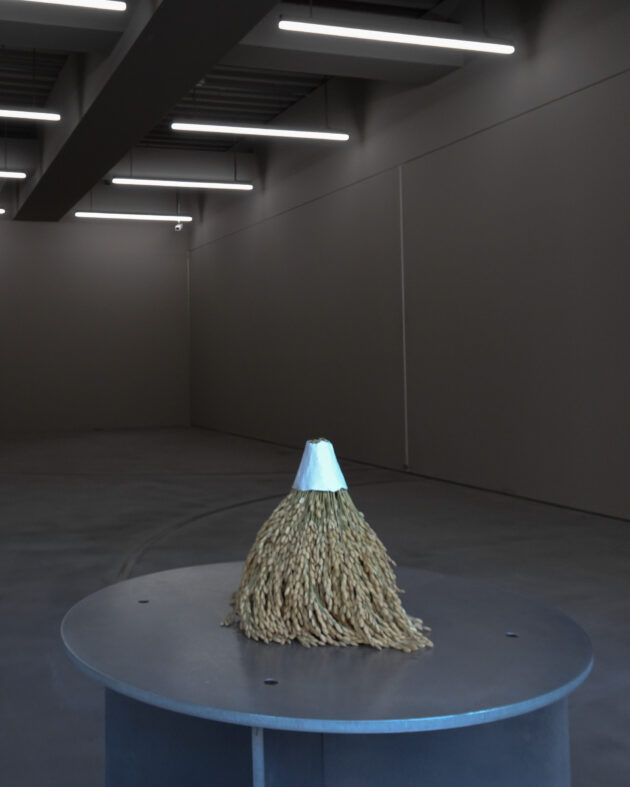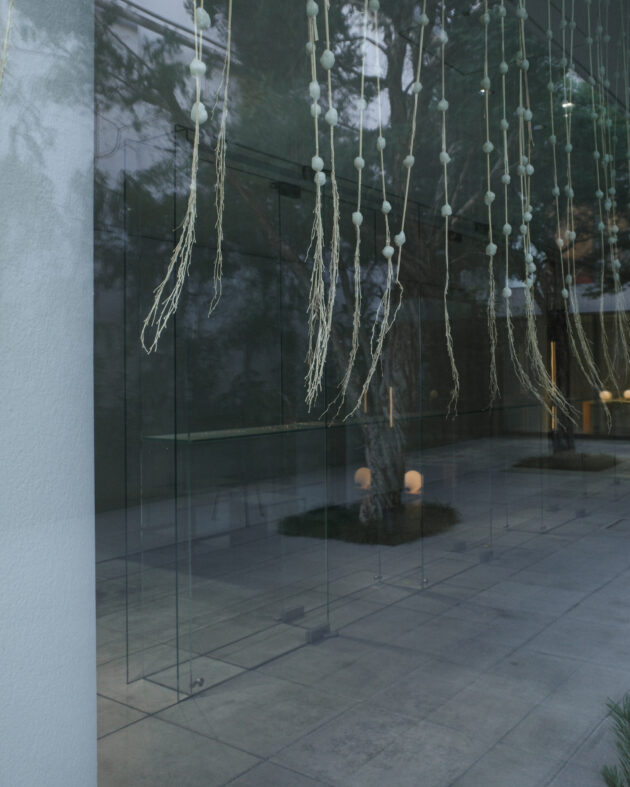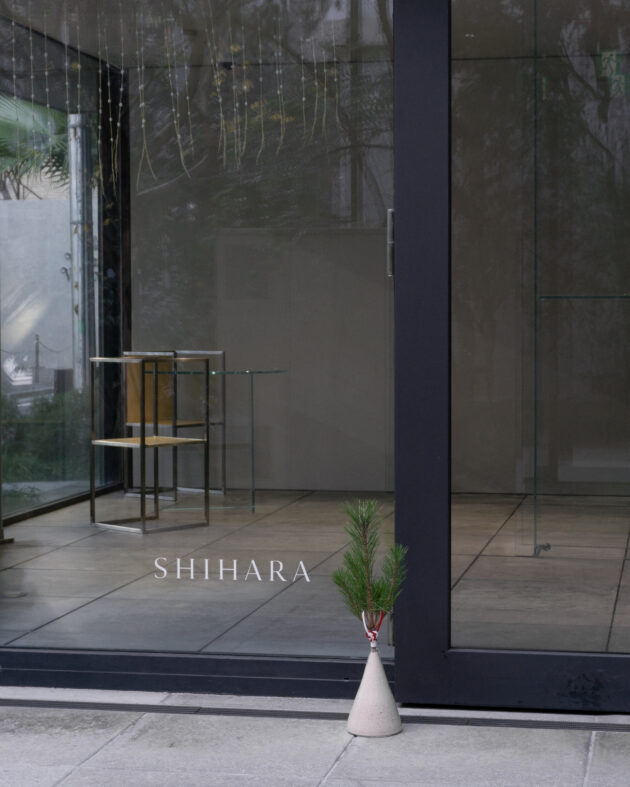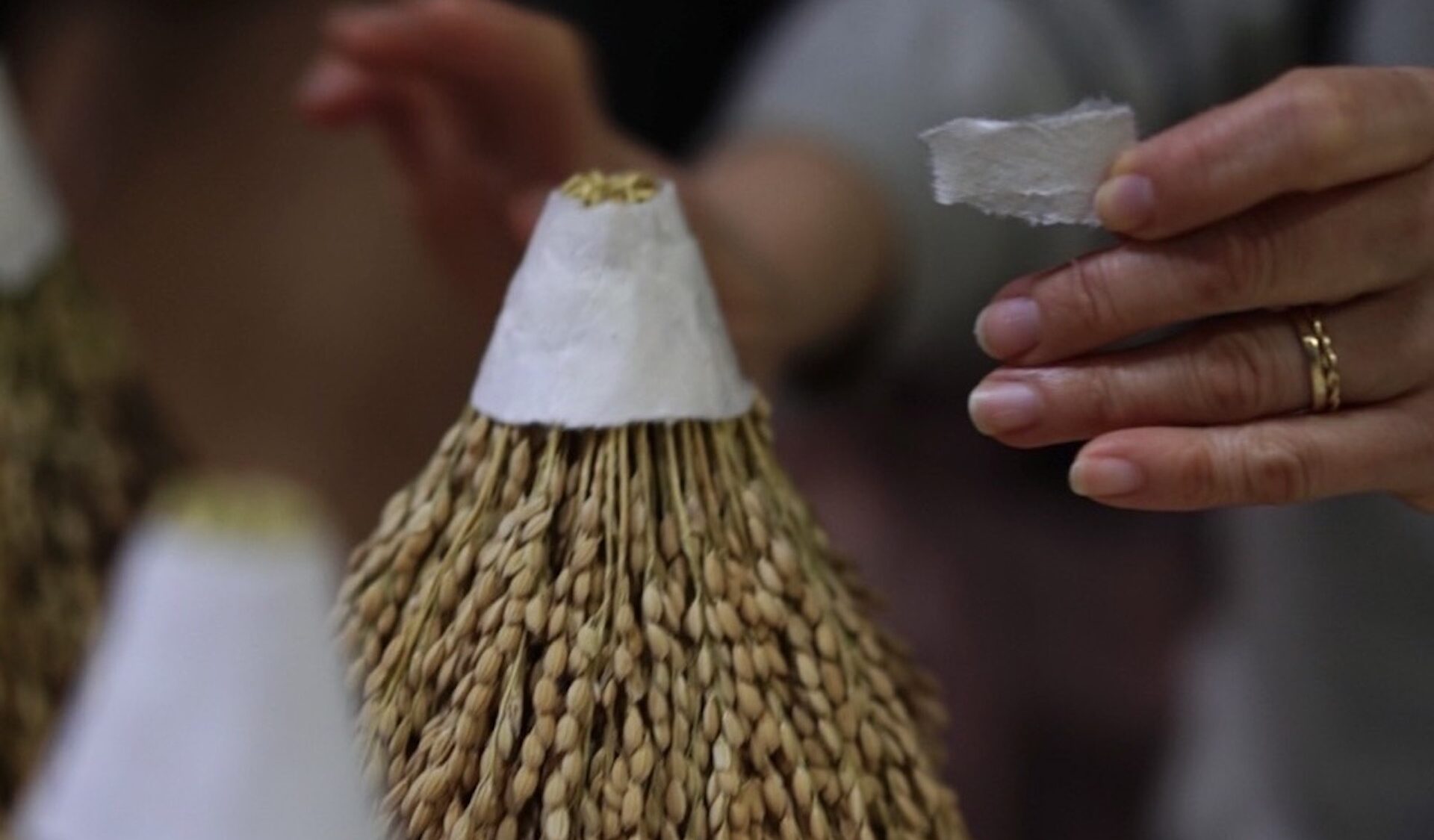
12 28 2023
Kyoto, Japan
Hayato & Mika Nishiyama
from Mitate
日本人でなくとも、「Fuji」を知る人は多い。世界的にも類を見ないその優美な風貌が印象的だからなのだろう。日本の象徴として国外にも広く知られている。
私たちも、その美しさに古くから影響を受けてきた。日本で最も古い歌集「万葉集」にはすでに富士を讃える歌が詠まれ、それ以降「源氏物語」や「伊勢物語」などの文学、江戸期の松尾芭蕉や与謝蕪村らの俳句、葛飾北斎や歌川広重らの絵画など、数多くの芸術作品に富士は描かれてきた。
人と自然が信仰と芸術を通して共生する姿は、富士が持つ大きな特徴とも言える。
また、縁起のよい初夢として「一富士、二鷹、三なすび」の言伝えなどからも、富士が文化や芸術だけでなく、いかに日本の生活に大きな影響を与えてきたのかを知ることができるだろう。
日本料理の特徴である、高く盛り付ける精神ひとつを取り上げても、富士の景色を写したものであろうし、神様が降りてくる目印となる依代の先端がそびえ立っているのも、富士から形作られたからに違いない。信仰の対象として、霊山として崇められてきた富士の形を思えば、その頂に神様が降臨されたと考えるのは容易なことだろう。
みたてのつくる「富士」のお飾りは、88本の稲藁を使って末広がりの形に仕上げている。米作りには、「米」の字が表すとおり、八十八もの手間がかかるといわれいるが、そのひと手間ひと手間を数えるように稲藁を束ね、雪化粧のところには、ちぎり張りした和紙に胡粉を塗り重ねて表現した。
富士に信仰がない人でも、その素直な美しい形に自然と手を合わせてしまうような、そういうものを人は新年のお飾りとして迎え入れたいのではないだろうか。
Mount Fuji stands as a globally recognized icon, celebrated for its unmatched and graceful presence that leaves an enduring impression. Beyond serving as a symbol of Japan, it has achieved international acclaim.
In Japan, the allure of Mount Fuji has enchanted hearts since ancient times. The “Manyoshu,” the oldest Japanese poetry collection, already features verses extolling the magnificence of Mount Fuji. Across the centuries, Mount Fuji has inspired countless artistic endeavors, appearing in literary masterpieces like “The Tale of Genji” and “The Tales of Ise,” as well as in the haiku of Matsuo Basho and Yosa Buson during the Edo period, and the masterpieces of Katsushika Hokusai and Utagawa Hiroshige.
The harmonious coexistence of people and nature through faith and art is a defining characteristic attributed to Mount Fuji. Furthermore, Mount Fuji’s cultural and artistic impact on Japanese life is evident in auspicious New Year’s dreams, such as the popular saying “Ichifusa, Nifuta, Sannasubi,” and other enduring traditions.
Derived from the unique features of Japanese cuisine, the spirit of presenting dishes with elevation mirrors the majestic scenery of Mount Fuji. Similarly, the imposing tip of a shimenawa (sacred rope), serving as a marker for the descent of deities, is undoubtedly influenced by the presence of Mount Fuji. Envisioning Mount Fuji as an object of worship and a sacred mountain makes it easy to picture deities descending to its summit.
Our local craftsmen painstakingly create the decorative “Fuji” using 88 straw bundles, forming an expansive and artful structure. As rice cultivation involves 88 steps, symbolized by the character “米” (rice), each step is carefully counted as the straw is bundled. The snowy top, made of washi paper skillfully applied with gofun (white pigment), evokes a mesmerizing snow-covered effect.
Even for those who don’t approach Mount Fuji with religious reverence, its straightforward and beautiful form naturally commands respect. Embracing elements such as New Year decorations appears to be a shared desire among many.




